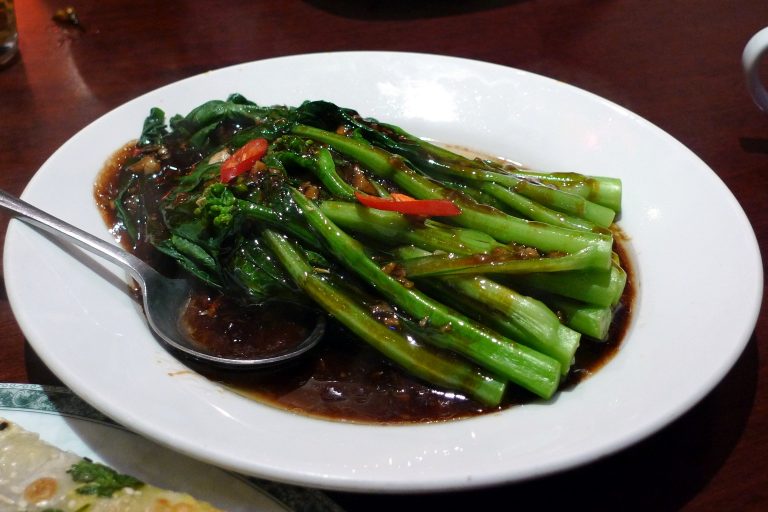There is a charming story that the families of early Chinese immigrants sailing from Guangdong to San Francisco provided them with seeds of the vegetables they were leaving behind. Among these were gai lan (芥蘭, pronounced jie lan in Mandarin), known in English as Chinese white kale or Chinese broccoli. This voyage across the Pacific Ocean was just another long journey for this plant.
Gai lan, is a vegetable belonging to the prolific species Brassica oleracea. Amazingly, this is the same species as such common vegetables as broccoli, Brussels sprouts, cabbage, cauliflower, kale, collards, and kohlrabi, despite their wildly differing appearances.
It may come as a surprise to many that gai lan did not originate in China, but the eastern Mediterranean. The ancient Greeks thought that cabbage sprang up from the drops of sweat dripping from the god Zeus himself. A more recent DNA analysis indicates that Brassica oleracea was domesticated from the plant Brassica cretica.
READ MORE:

Cabbage itself may have been domesticated as early as 1000 B.C. Theophrastus, a pupil of the Greek philosopher Aristotle, who is sometimes called the “father of botany” writing around 200 B.C., mentioned three types of cabbage.
From the eastern Mediterranean, Brassica oleracea spread west to England, France, and Spain. It went east to China, presumably traveling with the caravans along the Silk Road. In any case, it reached China around 600 A.D. Somewhere along its eastward migration and sometime around 700 A.D., Brassica oleracea gave rise to a new variety, Brassica oleracea alboglabra, Chinese white kale or gai lan, which is its pronunciation in Cantonese and some other Chinese dialects.
Success
You are now signed up for our newsletter
Success
Check your email to complete sign up
In its Latin name, albo, or white, refers to the florets, and glabra to the smooth, hairless leaves.
Since then, it has been the most commonly eaten green vegetable in China and the neighboring countries, Vietnam and Myanmar. Although it’s also called Chinese broccoli, it is the succulent leaves and tender stalks of gai lan rather than the florets which are usually eaten. Gai lan has become almost as ubiquitous as rice for most home-style Chinese meals.
READ MORE:
Usually, it is stir fried with garlic then served with oyster sauce. Gai lan is best eaten when it is young and tender and tastier. Older bunches can be identified by yellowish leaves or open flowers. If the stalks are white, crusty, or thick they are old.
Gai lan has health benefits too. Like other members of the Brassica family, gai lan provides vitamins A and C and a variety of antioxidants. It contains folate which is required to manufacture red blood cells and by pregnant women. The ancients believed that the related vegetable, cabbage, was good for your health. Twenty-five hundred years ago, the Greek physician Hippocrates prescribed cabbage.
Five hundred years later, the Roman statesman Cato wrote enthusiastically that cabbage is a sure-fire cure for a multitude of conditions. The modern magic of DNA analysis has recently been applied to vials of medicine recovered from a merchant ship wrecked around 130 B.C. Some vials contained residues of cabbage!

The saga of gai lan did not end when it arrived in China. Around 1989, a Japanese seed company, which already sold broccoli seeds, started hybridizing broccoli and gai lan. The company sent seeds of the new hybrid to California in 1994, where the practical details of its commercial production were worked out. Eventually a new vegetable, broccolini, was ready for the restaurants and supermarkets.
The productivity and development of Brassica oleracea is sure to continue, given the multitude of varieties that currently thrive around the world.
Over the centuries, the Chinese go-to vegetable has journeyed along the Silk Road to China and thence across the Pacific to North America. Its progeny born in Japan is served and upscale restaurants worldwide. What an Odyssey.
Janet Weiner contributed to this report.












